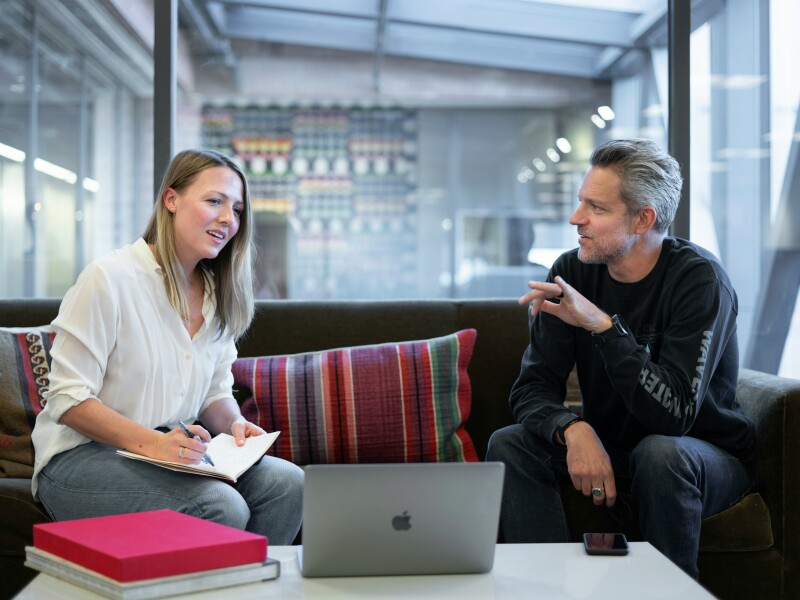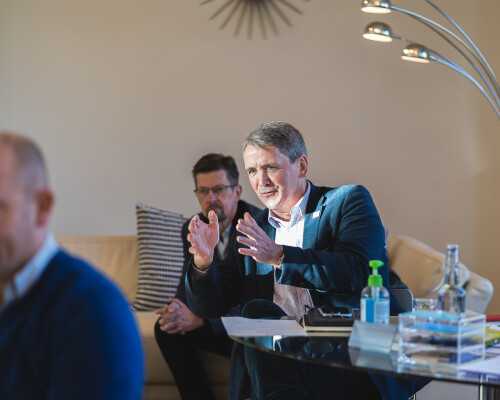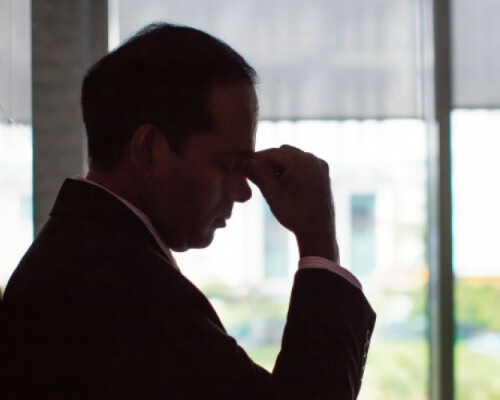I thought I was just going for an interview. I had moved from Bath to Edinburgh after the first Rugby World Cup in 1987 and needed a job and, in the old amateur era, there were a few organisations that liked the idea of having an international rugby player amongst their ranks. And so, the meeting was arranged.
I turned up in my best suit ready to make a good impression but when I was greeted at reception, I was told I wouldn’t be finished for at least 3½ hours. 3½ hours?! That was the whole afternoon! I had assumed I’d be there for no more than one hour; ninety minutes at the outside and had made other appointments which couldn’t be changed (there were no mobile phones in the late ‘80s after all).
The Personnel Assistant that greeted me (it was ‘Personnel' in those days), told me that I was due to spend the afternoon being assessed – doing a barrage of psychometric tests – verbal and numerical reasoning; personality profiling and perhaps I might even have got around to an interview once I had completed all the testing. Apart from the fact that I didn’t like the sound of all that and I had other appointments to attend, I decided to make my excuses and leave – and in doing so, possibly passed up on a great career opportunity. As I walked away, part of me was relieved that I had decided to ‘pass’ on what the organisation had planned for me, but another part also wondered what it might have discovered about me.
Executive Assessment
Executive assessments have come a long way in the last few decades and their use has evolved. Since that fateful day in Edinburgh, I have been through a multitude of assessments – some have been used to help create development plans for me while others have been used to validate promotions. Some others I’ve just done for fun because they have a different approach, or they use a different set of tools – Hogan becoming a firm favourite in the current environment. But none have ever surprised me.
Assessment for Development
While at United Distillers, I was lucky enough to spend a number of days at a development centre, constantly under the scrutiny of a group of HR folk from the business, alongside the occupational psychologists who had designed the programme. After days of team related exercises, interviews and other psychometric tests, we were presented with a report which told us about our strengths and development areas, based on the leadership competencies desired by the business. Having been the author of most of the report – ok, well not the words, but the actions and observations – there were no surprises. I would have had to have been totally oblivious to my own behaviours and values to have read something unexpected. I could not challenge anything in the report, nor would I have wanted to, because that would have been disingenuous. But I did leave my debriefing meeting with the occupational psychologist thinking ‘So what?’. There was no discussion about the implications of this report on my career, nor what I needed to do to address my development areas. That was clearly for me to figure out on my own and, in my view, an important part missing from the process.
Assessment for Hiring
Assessments are also used to help make a judgement on key hires in organisations. “What is the candidates’ suitability for the role?” is the critical question being posed, but assessments should not be the only factor in making such a judgement. The reports can tell you a great deal about an individual and how they might react in stressful situations, alongside the candidate’s values and preferred ways of working. However, even though they are notoriously unreliable, interviews are essential to validate experiences and probe for evidence to support claims. Additionally, a rigorous referencing process will also help obtain concrete proof of what it has been like to work with a particular candidate, often from the mouths of those who have been the candidate’s colleagues. The assessment can raise the odd ‘red flag’ but it is down to the headhunter or person hiring to confirm whether that red flag poses a real risk – at the end of the day, the judgement of an individual or hiring panel will make the final decision and one just needs to ensure that no unconscious biases play out in that ultimate choice.
Assessment for Teams
The view at the School for CEOs is that executive assessments or personality profiling is most useful in helping to understand whether a leadership team have the capability to deliver the organisation's strategy in the coming months and years. This can be from both an individual perspective and from the perspective of the team as a whole. Most importantly, we start from the assumption that the answer is probably going to be ‘Yes’, given that they are all there because they have the subject matter expertise and track record of delivery, but that there may be some opportunities to address some individual and collective development themes.
The identification of these development themes is relatively straightforward, as I have noted elsewhere, but the critical part of the process is in answering the ‘so what’ question for both the individual and the group. What do they need to do to address their development themes and how can those of us who specialise in supporting an executive or a team’s development help them, if at all?
It is this final part of the process that is so critical and really where the rubber hits the road. A lovely report is one thing but turning that into a series of activities and actions that will really accelerate the performance of both individual team members and the collective, is another thing altogether. The crafting of the development plan becomes the most crucial part of the process, alongside the buy in of individual, sponsor and group. It is likely that the organisation will also have to invest both time and money in the development of the individual or team. Time after time, assessments and development plans are completed and then locked in the bottom drawer of a desk, only coming out on demand. So, commitment and motivation is every bit as important as the process itself – indeed, without it any assessment or profiling is time and money down the drain.
Development Planning into Action
So, what of my own experiences? There were some clear actions I could take out of my very first assessment, over 30 years ago. Without knowing it, my learning was based on the 70:20:10 model where 70% comes from challenging assignments; 20% from developmental relationships and the final 10% from formal learning experiences. I took myself off to have a conversation with my boss’s boss about my development and as a consequence, found myself on a secondment for 3 months in a completely different part of the business, which was a very steep learning curve. I went on a ‘Finance for Non-financial Managers’ course to develop my understanding of the financial aspects of the business and I set myself some stretching targets in my day-to-day role which ended up in my writing a paper that went to the Guinness Board for approval. All of this was prompted by the assessment process. It certainly set me up for success and done well, can do exactly the same for others as well.
Click here for more information about the School for CEOs Profiling and Executive Assessment services.





